In software quality assurance, UI (user interface) tests ensure that the software specifications meet user needs. Engineers leverage functional testing, regression testing and end-to-end testing to deliver solutions with superior quality that are easy to use, maintain and upgrade. GUI testing (graphical user interface) often involves all of these tests.
GUI Testing: Benefits and Disadvantages
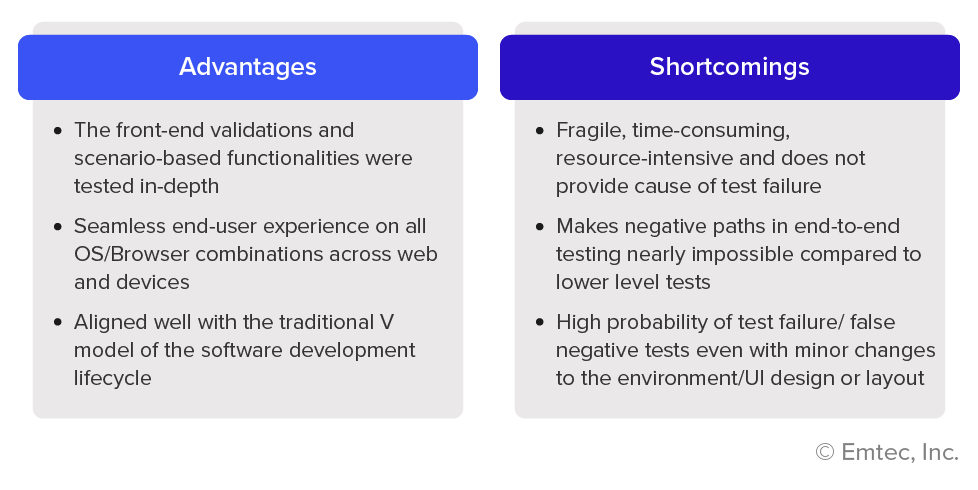
GUI Testing: Then vs. Now
The traditional testing approach has undergone a massive shift due to an explosive adoption of disruptive technologies. No wonder! The push to go digital is supported by the introduction of multi-tier architectures. After studying new developments in Agile, DevOps, TestOps, and other methodologies, coupled with industry best practices, we have seen that testing priorities generally fall into these tiers of importance:
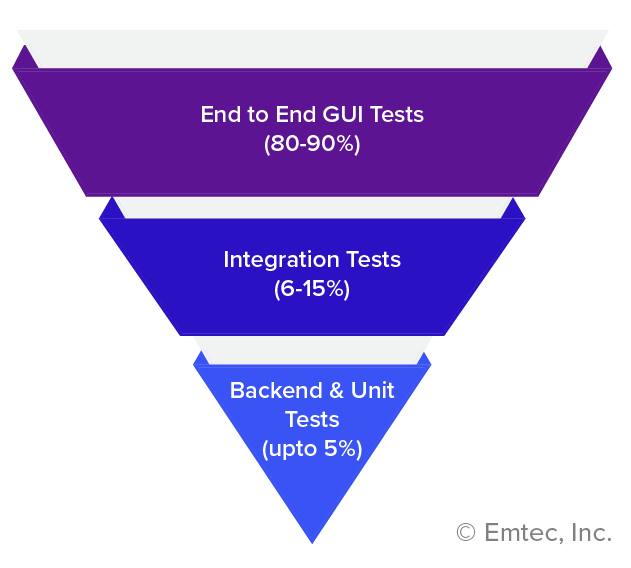
Today, the standard industry practice involves building slow, complicated, and fragile end-to-end GUI tests.
In the future, focus should be on building a solid foundation of unit, integration, and acceptance tests.
The future is ‘bottom-up’ and not ‘top-down’
In the future, we foresee testing focus will be an inversion of the pyramid above which emphasizes Unit/API/Integration level tests over frontend GUI tests.
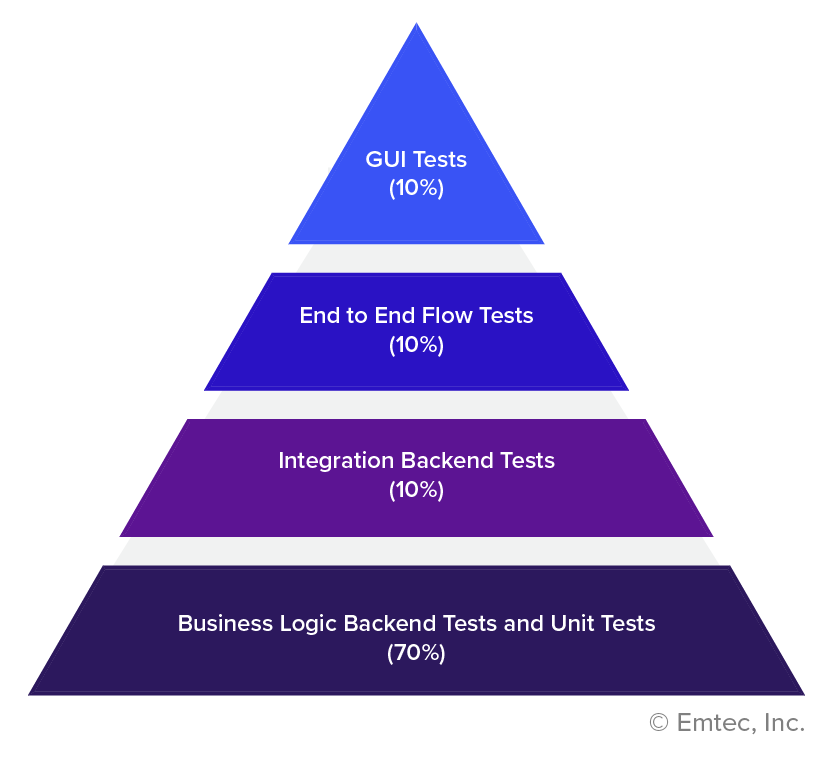
The value of an inverted pyramid
The inverted pyramid testing practice will ensure a ‘shift-left’ approach i.e., test early and automate at the API/Backend level. These tests can increase the vertical depth and coverage of functional testing and provide the following benefits –
Savings in time and effort
- Engineers could save 50% of their time spent on automating end-to-end scenarios if they could test the backend and execute most functional scenarios to verify that the feature is working properly.
- Once the frontend is delivered for testing, testing the status of frontend validations, functional flows, and necessary integrations would be all that is required.
Simplifying SDLCs with automation
- Enhances depth of coverage and defect identification during the development stage.
- Simplifies concurrent and continuous testing throughout sprint releases or as required.
- Ease of automating feature-heavy backend tests and reduced load on frontend tests in terms of the automation suite. This will ensure that the time taken to run the automation is optimized to encourage multiple runs for delta changes in an agile release methodology.
- Includes scenarios in the backend test automation suite to accommodate any data combinations that have not been tested from the frontend.
- Leverages test data management by using the same data sets used to run the backend tests.
- Increases the coverage of testing third-party/external interfaces through service virtualization or existing sandboxes for such integrations.
Moving forward with automation frameworks
- To build or not to build?
Today, we need to bring about a change in automation strategy, framework and execution owing to –
- Technology / SDLC disruptions
- Traditional automation techniques becoming redundant
- Emerging trends with test pyramid inversion theories
The goal of software quality engineering is to enhance the overall outcome of applications. It is best to adopt any existing (researched and shortlisted) toolsets and stitch them together with framework components. However, it does not mean that new tools and their potential need to go unexplored. With proper planning, you can achieve the flexibility to manage test data with ease and efficiency.
- Microservices Framework
Microservices have engulfed most application architectures. The following diagram represents a suggested test framework design –
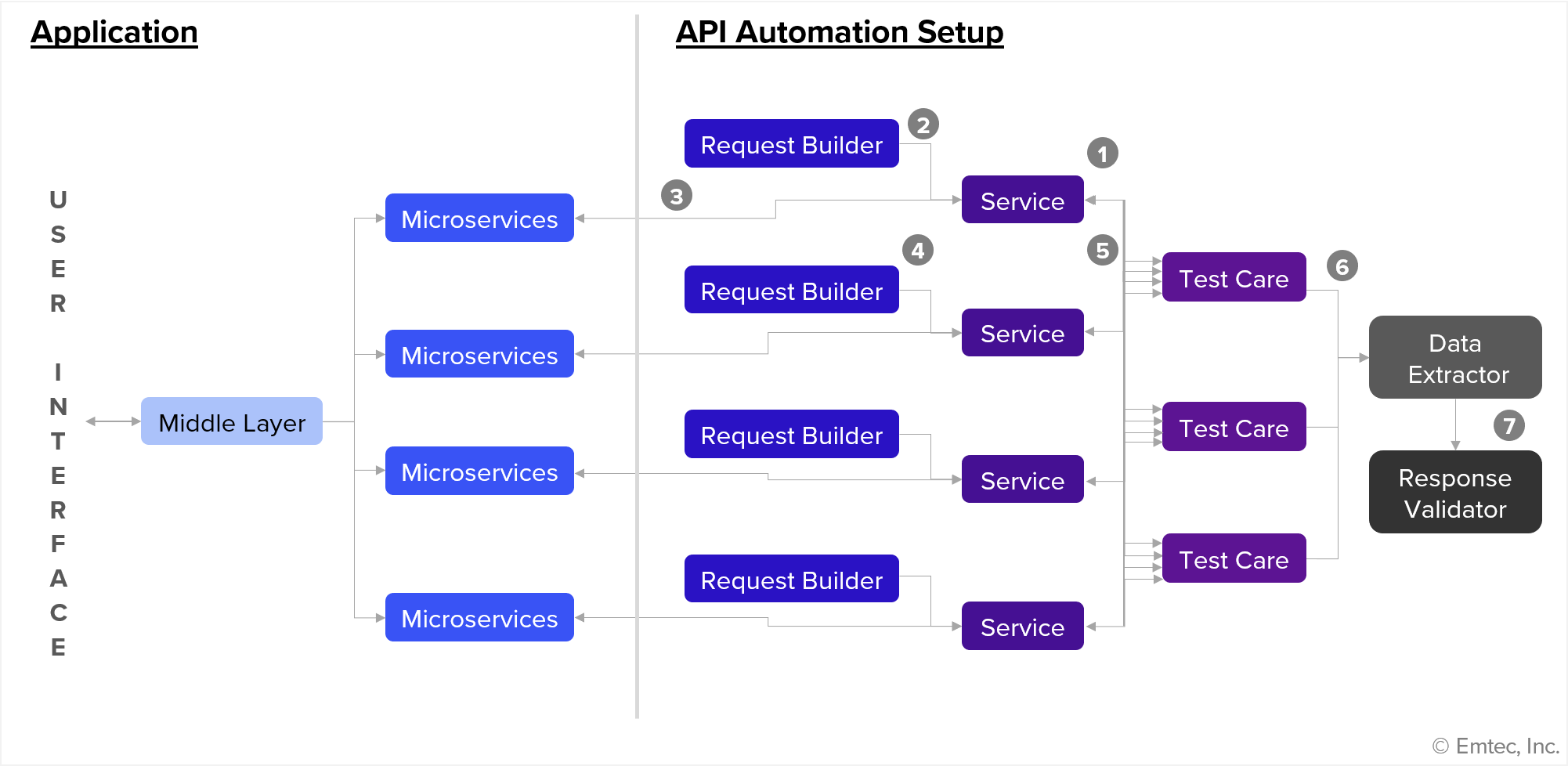
The following table highlights the features and description of the components –
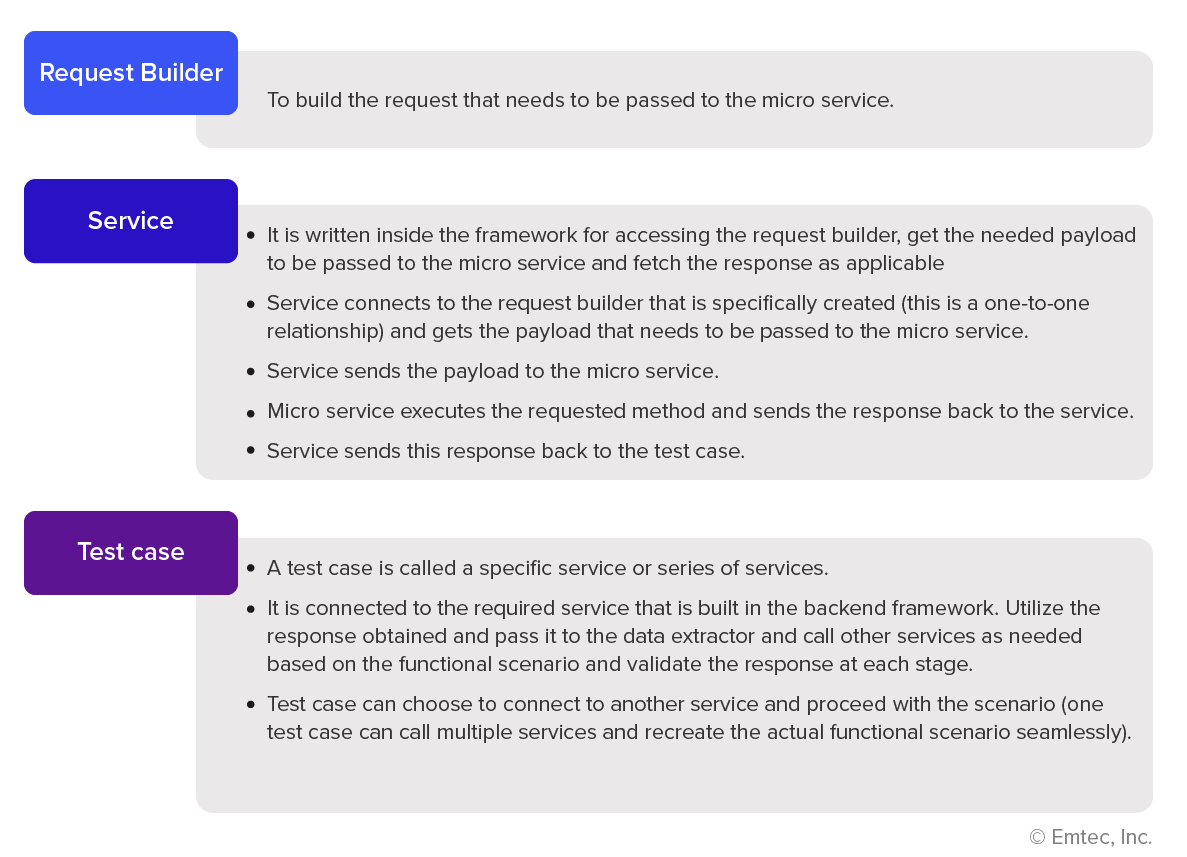
Software testing engineers can leverage some of the readily available open source libraries to build tools/framework –
- REST Assured – for JAVA or Kotlin
- Requests – as a Python library
- RestSharp – for simple RESTful API testing in C
The task of writing frameworks is often time-consuming, effort-intensive, and unnecessary. In such cases, some of the pre-made software testing tools that can save time and effort for software quality engineers are –
- Katalon studio
- SoapUI by SmartBear
- Carina framework
Here’s a detailed overview of the myriad features of the most popular pre-made tools –
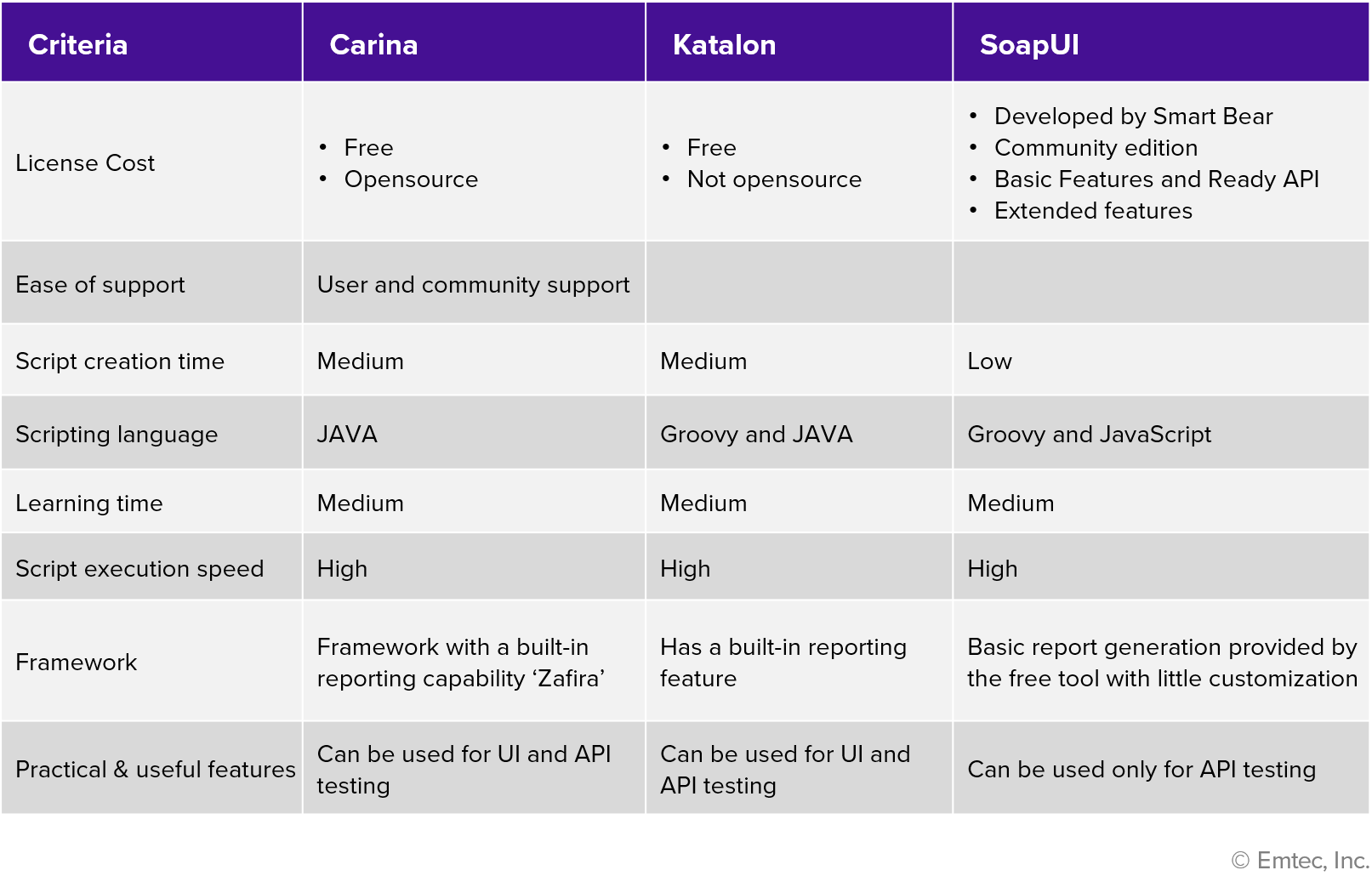
In conclusion: Let your needs determine the choice of technology
The need for automation is more important than ever to meet the continued demand for faster application releases and upgrades. Manual testing alone will not be able to bridge the gap between this overwhelming demand and supply. By adopting faster, more automated approaches and reducing manual testing, engineering teams will be more empowered to deliver quality products on a streamlined delivery schedule.
Often, technology with its tools and processes can make or break the software development lifecycle. To be successful, Software Quality Assurance Engineers need to map their specific organizational requirements to the available frameworks in the marketplace and choose the best for their needs – an already available framework, a hybrid framework or a custom framework.
At Bridgenext, we empower clients to align their business needs and objectives with the right technology for superior and accelerated application testing.
Contact our Quality Assurance experts to learn more.




